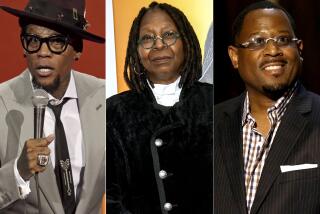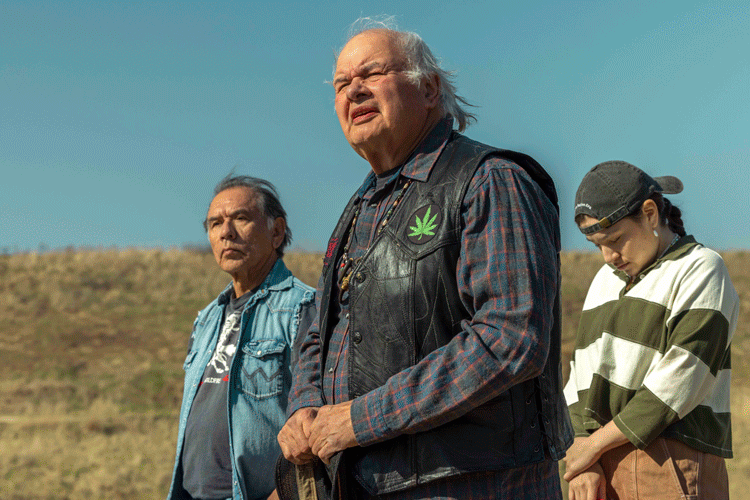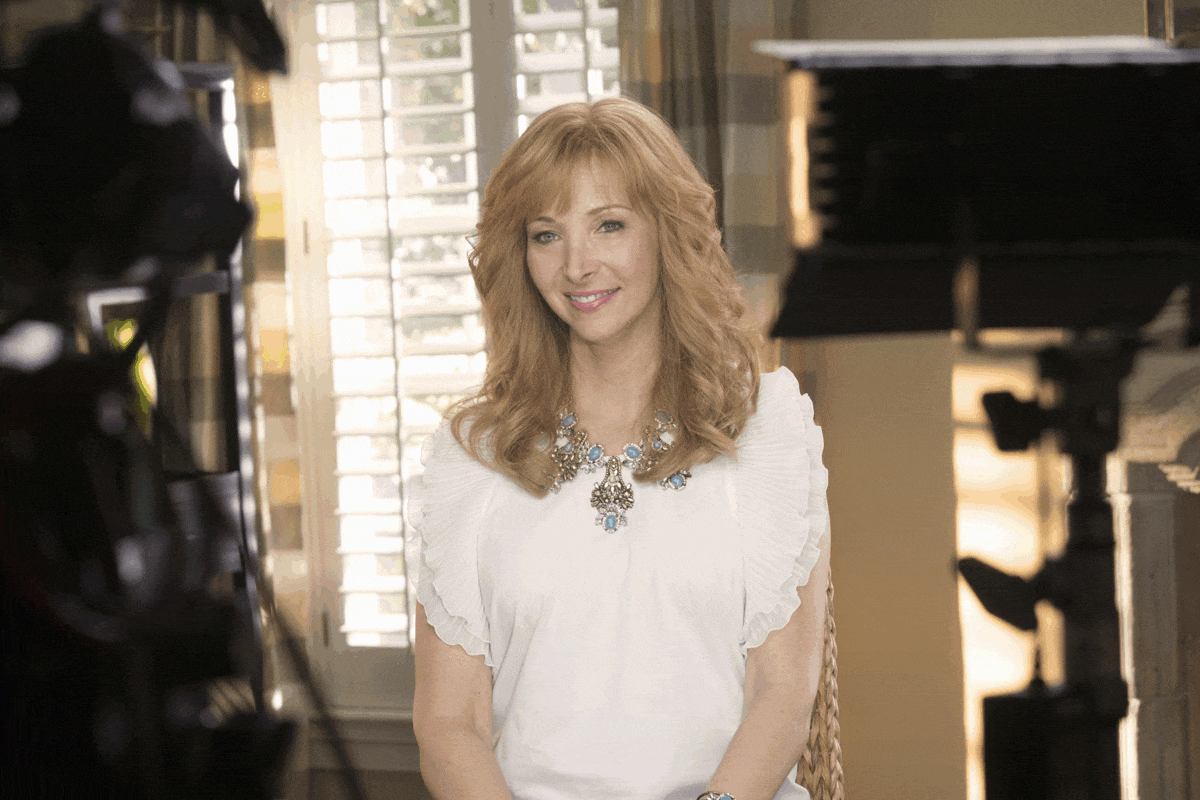Selling Toddler TV
- Share via
“The Big Comfy Couch” is a sweet half-hour public TV show for preschoolers. The main characters are a young clown and her doll--both sporting bulbous red noses--who perform skits designed to help youngsters develop physical and emotional skills. Some people call it the “Barney” of Canada, where it originated.
Gentle appearances aside, “Couch” competes in one of the most competitive and difficult arenas in show business, according to Richard Goldsmith, the man who turned the program into a U.S. hit.
Savvy businessmen like Goldsmith have found that there can be a lot of money in entertaining toddlers, even if you don’t get a licensing fee for the show itself. PBS’ “Barney” has appeared on the Forbes magazine list of top-paid entertainers, and “Sesame Street” has had the hottest toy licenses for the last two Christmases.
Goldsmith himself has received close to $3 million in royalties from “Couch” merchandise in the last two years. That’s not a huge amount, but it’s the start of what he hopes will be a very profitable business.
How “Couch” finally got picked up by public TV stations around the country and sold more than $50 million worth of merchandise at retail is a story involving Goldsmith--a precocious entrepreneur who sold both Avon and Fuller brushes at age 9--as well as the owner of the Ringling Bros. circus, the songwriter of “Da Doo Run Run” and the producers of the “Ernest” movies.
*
After years of being ignored by the studios, preschool programming--a field long dominated by PBS shows such as “Sesame Street” and “Mr. Rogers”--has become hot. The huge success of “Barney” was the wake-up call, and now the studios are rushing to put out preschool videos. TV channels such as Disney and Fox are boosting their preschool programming.
“For months, I went all around Hollywood trying to set up preschool programming. Most people just can’t relate to preschool,” says Goldsmith, 34.
It wasn’t just about relating. Until recently, it was hard to convince advertisers to sponsor preschool shows. And to get on noncommercial PBS, the most-watched network among preschoolers, you basically have to give away the program and hope to make money through merchandising. “You have to have thick skin and long-term thinking to go that route,” says Goldsmith.
Goldsmith left his position in 1990 as director of network specials for Walt Disney Television to pursue what he saw as the under-served preschool niche. Before his two years there, he worked for two years at LBS Communications, syndicator of such kiddie fare as the Care Bears and Teddie Ruxpin. But his television career started even earlier.
At 13, he was a reporter for the national publication “Children’s Express,” interviewing such young luminaries as Jodie Foster. That led to him producing a one-hour news magazine, “Generation,” which he sold to ABC at 15.
When he left Disney in 1990, Goldsmith initially focused on children’s audio products: It was a booming market and presented a much lower cost of entry than did television. Goldsmith set up Big Kids Entertainment with personal savings, credit card advances and some backing from John “Buster” Cherry III and Jerry Carden, the men who brought you “Ernest” and who met Goldsmith while he was at Disney.
Goldsmith also hooked up with songwriter Jeff Barry, whose credits include “Chapel of Love,” “Da Doo Run Run” and the Archies hit “Sugar, Sugar.” They set up a deal with Warner Bros.; Goldsmith licensed children’s properties such as the Richard Scarry characters and Scholastic’s “The Baby Sitter’s Club.” Barry and others set them to music. Goldsmith got Ringling Bros. owner Kenneth Feld, whom he’d also met while at Disney, to include a segment featuring Big Kids songs, called N/Motion, to the circus.
The audio business did nicely, but Goldsmith soon realized the big opportunity was in “finding entertainment properties and managing them on a global basis,” rather than just licensing bits and pieces. He thought the best opportunity would be finding the right property for television.
Initially he worked with the Fisher-Price toy company, which put money into focus groups for an original preschool show. But Fisher-Price stopped short of spending the several million dollars it would have cost to launch the show. Goldsmith decided it would be best to acquire something instead.
In 1994, a friend told him about “The Big Comfy Couch.” Goldsmith struck a long-term deal with the show’s creators--Annabel Slaight, Robert Mills and Cheryl Wagner--for worldwide merchandising rights, U.S. distribution rights and a share of distribution worldwide. In exchange, they get money to spend on production and a cut of merchandise revenue.
But Goldsmith couldn’t get the show picked up by PBS’ own distribution system, the biggest and most powerful distributor to PBS stations. He still grumbles about that, questioning “how PBS makes its programming decisions. . . . I think their choice of programming is not always necessarily in the best interest of children, but in many cases is about the deal.”
PBS representative Stu Kantor confirms that PBS makes a sizable amount--about $88 million in the current fiscal year--from products such as videos and adult education courses based on PBS shows. But he says the children’s-programming decisions are based on strict educational standards. PBS programming executives declined to comment.
Undaunted, Goldsmith set up his own television distribution operation--Hollywood Ventures--which works hand-in-hand with Boston-based American Programming Service, the largest of the three alternative-programming providers to PBS. To get the show picked up, the two companies offer local PBS affiliates things like “Comfy Couch” study guides and dolls to give away to fund-raising donors.
PBS shows are not tracked by Nielsen ratings, but “Couch” has quickly taken off in the U.S. since its launch in January 1995. The show is broadcast, mostly through PBS affiliates, in 90% of the country. Locally, the show is seen on Saturday morning on KCET; in most other markets, it appears five days a week.
*
For merchandising, Goldsmith cut a deal with Time-Life, which used “Couch” to develop its first-ever retail distribution system; the company previously sold only through direct marketing. To date, according to Goldsmith, more than $50 million worth of items such as videos, dolls and audiotapes have been sold. Goldsmith and Time-Life are nearing an agreement with a major retail chain to create “Couch” “boutique” areas in stores.
Goldsmith continues to seek new properties. Each deal is different, but generally Goldsmith gets merchandising and partial distribution rights in exchange for his investment.
Goldsmith knows he faces stiff competition from the studios--he says he’s currently bidding against Fox for an overseas show. But he thinks he can offer a show’s creators a better deal. “These shows tend to be somebody’s baby. We’ll give them the attention, set up a business and run it for them,” he says. “We don’t just say, ‘Here’s some money, now go away.’ ”
More to Read
Inside the business of entertainment
The Wide Shot brings you news, analysis and insights on everything from streaming wars to production — and what it all means for the future.
You may occasionally receive promotional content from the Los Angeles Times.










